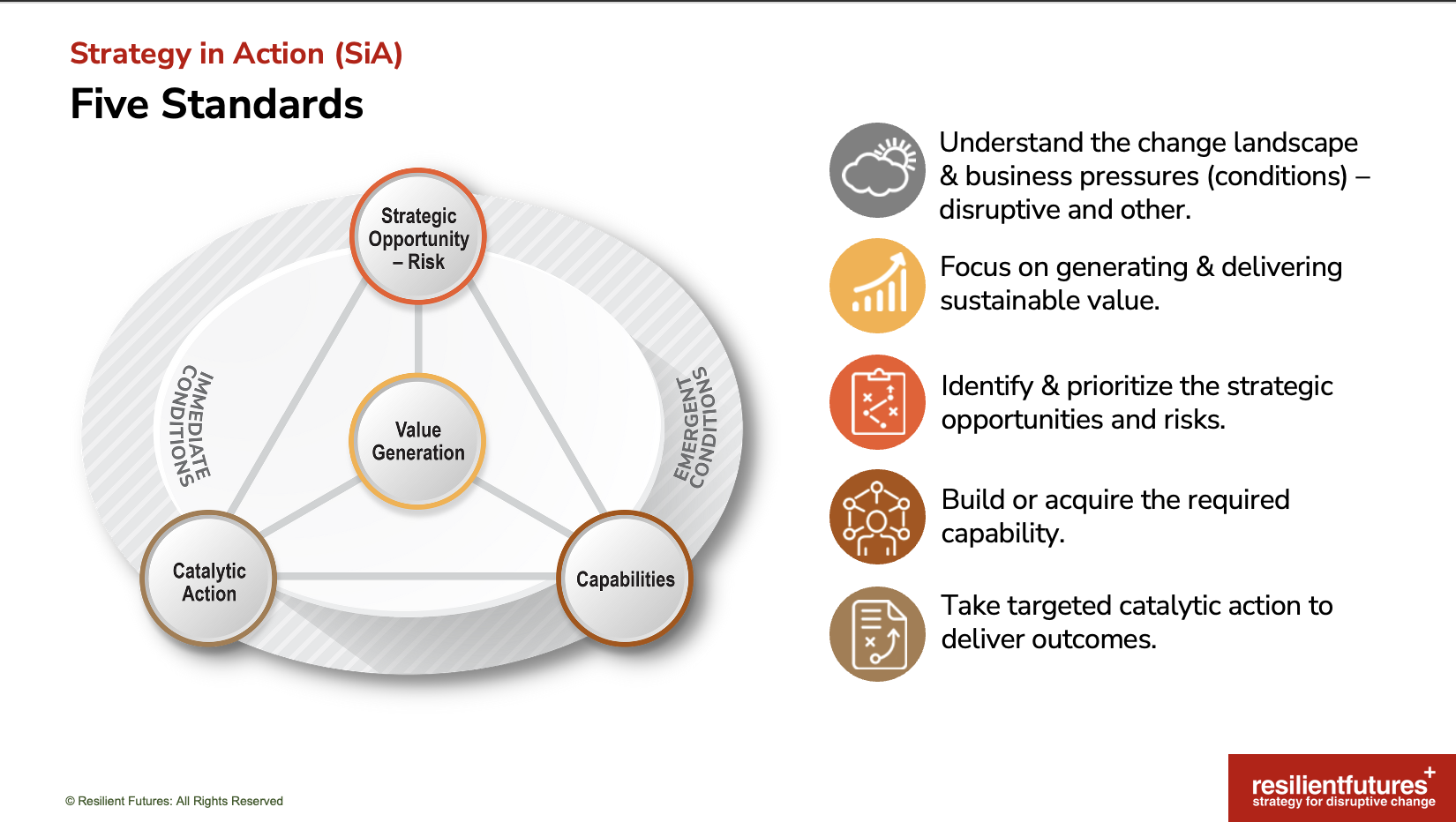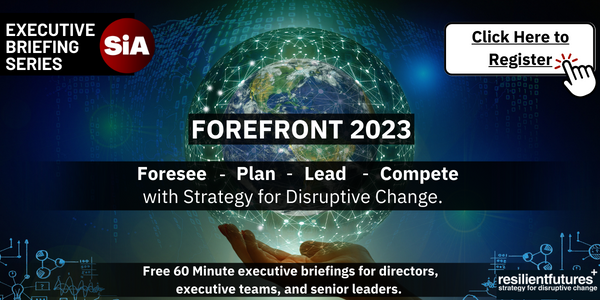'Welcome to the wake-up!' That line is taken from the opening of the book I (David) co-authored in 2015, Disrupted: Strategy for Exponential Change. The intention was to reinforce that we were a new era of transformation, the likes of which hadn’t previously been seen in human history: the exponential era. Sure, society has experienced successive waves of innovation and transformation across the agricultural, industrial, information revolutions. However, the difference today lies in the speed and systemic implications of change.
Leaders who ignore this reality and conduct 'business as usual', do so at their peril. Organisations that don’t evolve and continue to try to extract value from the old systems, structures, and processes - even as it becomes apparent that the returns are diminishing - will not thrive and are unlikely to survive.
The 2015 messages in the book are more important than ever. Underestimating the future scale and impact of change is potentially disastrous. The need for transformation, unquestionable, the challenge for organisations, leaders and their teams is working out how to do this in a VUCA (volatile, uncertain, chaotic and ambiguous) world.
Organisations can remain at the forefront of disruptive change in 2023 (and beyond) but only by adopting a new mindset, toolset and a strategic focus that readily translates to action. Leveraging transformation and changing ahead of change, isn’t impossible. It requires the discipline to do the work and equipping people with strategy tools such as Strategy in Action (SiA), a tested framework designed for disruptive change. In supporting leaders, their organisations and people to learn and adopt SiA, Resilient Futures has 20+ years expertise in using strategy tools to make sense of disruption, here are some fundamentals:
1. Understanding how disruptive change and disruption works is key…
Understanding that disruption isn’t linear and doesn’t occur in isolation, but as part of a 'whole system' of disruptive change, is key. Systemic disruption is experienced when a single condition, or confluence of conditions, creates a discontinuity in a formerly continuous progression or flow of information, communication, education, production, trading and transport (ICEPPT) transactions. As our systems (health, education, supply chain, organisations, humans, etc.) respond to change, performance initially drops off. If resilient, the system will eventually recover to an acceptable level of performance, if not, it will continue to degrade and decline.
Adopting an active practice, monitoring the signs and signals of systemic change is critical to anticipating disruption. This should be followed by determining if changing ahead of change is possible. Otherwise, prepare to recover from the disruption.
2. Leveraging inevitable disruptive change is possible...
Conventional resilience, the ability to withstand or recover from shock, is a sub-optimal approach to disruptive change - given the new strategy tools available. By anticipating disruption and exploring it’s implications organisations can become resilient, learning systems: learning being key. Resilient, learning systems recover more successfully following disruption - elevating and surpassing historic performance that was normative prior to the disruption.
People, organisations, industries, and communities can proactively choose to be resilient, learning systems. Knowing this is fundamental to leveraging disruption. It is not only possible, but preferrable to think ahead of disruption, to anticipate it and start the resilient, learning journey proactively and change ahead of change.
3. Equipping people with a way of thinking and acting in this context is critical…
Disruption is disorienting. Reflect back on the experience of going into lockdown, as the reality of a global pandemic hit. That immediate, rapid flip to new ways of working, living, and interacting was disorienting. The ability to reorient to a new reality, post any systemic disruption is significantly enhanced if we’ve been taught how to anticipate the next wave(s) of disruptive change. Learning how to make sense of the immediate conditions (currently impacting our organisations) and the emerging conditions (that will (or may) impact in the future) is core to leveraging disruption.
In our work we watch 10 global patterns of conditions - both individually and as a whole-system of change and support the organisations to do the same. Watching for and reporting on material conditions enables organisations to better prepare for disruptive change and equips teams with critical capabilities for leading through turbulence and transformation.
4. Applying the new standard for strategic thinking, decision-making and action is necessary…
Effectively leveraging disruption requires a new mindset, toolset, and strategic focus: the SiA framework. SiA activates the inherent, cognitive strategic capabilities most people possess and subconsciously use regularly. That capability aligns with the five new standards for strategy and planning in disruptive change. These are summarised below:

As an innate cognitive capability SiA is used in all aspects of daily life: driving, parenting, playing sport, etc. These activities require dynamically reading conditions, a clear understanding of value, regular assessment of opportunity and risk, the use of complex capabilities to generate sustainable value, and dynamic, iterative action in anticipation of, or response, to changing conditions.
Back to the 'wake-up'...
As leaders, you will appreciate being awake to the VUCA reality but also hopefully energised by the possibility of leveraging inevitable disruptive change. Relying on conventional forms of resilience is akin to choosing obsolescence. Forcing our organisations to continually bounce-back from or push through the shock of disruptive change is exhausting and the ability to recover diminishes through each wave.
By releasing old methodologies and becoming resilient, learning systems we can step into a resilient future. Consciously thinking and acting strategically as part of the everyday rather than applying set and forget strategy and planning. Change ahead of change is possible AND preferrable. Activating SiA is consciously applying inherent capabilities so that in this 'exponential era', we have fit for purpose strategies to navigate disruptive change and propel us forward.
Join us next month when we discuss using foresight to get ahead of disruption and the 10 must-watch patterns to supercharge your approach to leveraging disruptive change.
